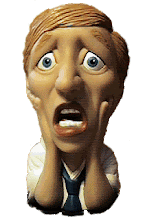Mega Giant Corporations Are Very Bad for America
Rather than having a winner-take-all battle among automobile makers or between Wal-Mart and Target, for example, we have competition between the monopoly and all the people under its power. In the case of Wal-Mart, this includes its workers and its suppliers as well as its customers. The real competition, in other words, is between the billionaires who make and wield monopolies like Wal-Mart and people like you and me.
Today’s monopolies increasingly appear in the shape of giant trading firms like Wal-Mart, which are designed to govern entire production systems, even entire swaths, of our economy.
For those Americans who believe in what we were taught in civics class and Econ 101, the most disturbing revelation was not even the fragility of our food systems, but that some of our most cherished beliefs about how the U.S. economy works appear no longer to be true. We are told that companies are engaged in a mad scramble to discover exactly what we the U.S. consumers want and to devise perfectly tailored systems to supply those want as efficiently as possible. We are told that our economy is characterized by constantly chaotic yet always constructive competition and that any American with a better product and bit of gumption can bring that product to market and beat the big guys.
Instead of having infinite choice, as we thought, we are really presented with a wall of standard-issue cans and pouches that are distinguished only by the words and colors on their labels.
Let’s take a quick walk around the average U.S. grocery or big-box store.
Over in the health-care aisle we find that Colgate-Palmolive and Procter & Gamble split more than 80 percent of the U.S. market for toothpaste, including such seemingly independent brands as Tom’s of Maine.
In the cold case we find that almost every beer is manufactured or distributed by either Anheuser-Busch InBev or MillerCoors, including imports like Corona, Beck’s, and Tsingtao; regional beers like Rolling Rock; once independent microbrews like Redhook and Old Dominion; and even “organic” beers like Stone Mill Pale Ale.
Perhaps Americans are comfortable with the fact that Campbell’s controls more than 70 percent of the shelf space devoted to canned soups. After all, the firm grew to prominence after its launch in 1869, thanks to its pioneering successes in integrating advanced chemistry, mass manufacturing, and modern advertising.
But what are we to make of the modern snack aisle, where Frito-Lay in recent years has captured half the business of selling salty corn chips and potato chips?
And what about the business of selling tap water in plastic bottles? Here, if anywhere, is an activity that any enterprising young American should be able to master. All you would seem to need to enter the local market for water is a spigot, some bottles, and a cool label. Yet nine of the top ten brands of bottled tap water in the United States are sold by PepsiCo (Aquafina), Coca-Cola (Dasani and Evian), or Nestlé (Poland Spring, Arrowhead, Deer Park, Ozarka, Zephyrhills, and Ice Mountain).
Furthermore, what can we learn from the size of the corporation in whose store we now stand? Until we elected Ronald Reagan president, both Democrats and Republicans made sure that no chain store ever came to dominate more than a small fraction of sales in the United States as a whole, or even in any one region of the country. Between 1917 and 1979, for instance, administrations from both parties repeatedly charged the Great Atlantic and Pacific Tea Company, the chain store behemoth of the mid-twentieth century that is better known as A & P, with violations of antitrust law, even threatening to break the firm into pieces.
Then in 1981 we stopped enforcing that law. Thus, today Wal-Mart is at least five times bigger, relative to the overall size of the U.S. economy, than A & P was at the very height of its power. 13 Indeed, Wal- Mart exercises a de facto complete monopoly in many smaller cities, and it sells as much as half of all the groceries in many big metropolitan markets. Wal-Mart delivers at least 30 percent and sometimes more than 50 percent of the entire U.S. consumption of products ranging from soaps and detergents to compact discs and pet food.


0 Comments:
Post a Comment
<< Home